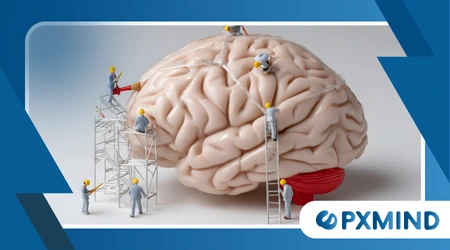The Teenage Brain: Why It’s Wired for Risk

The Teenage Brain. The profound journey through adolescence, characterized by bursts of independence and moments of questionable judgment, finds its roots in The Teenage Brain.
Anúncios
This period of development is far more than just a transition; it is a critical, and often daring, reorganization of the central nervous system.
A complex interplay of neural maturation and hormonal surges essentially primes young people for exploration.
For parents, educators, and society, comprehending the underlying neuroscience shifts the narrative from one of reckless youth to adaptive development.
This fundamental developmental stage, marked by a penchant for novelty, is not an accident of nature but an evolutionarily adaptive strategy.
What is the Neuroscientific Basis for Adolescent Risk-Taking?
The inherent thrill-seeking behavior characteristic of this age stems from asynchronous brain development.
Essentially, the emotional and reward processing centers mature before the cognitive control regions.
The limbic system, particularly the nucleus accumbens, which is central to processing rewards, experiences a significant boost in sensitivity.
This heightened response to potentially rewarding experiences drives a powerful motivation for sensation seeking.
Simultaneously, the prefrontal cortex (PFC), the brain’s executive control center responsible for planning and impulse control, is still undergoing protracted maturation.
How Does the Dopamine System Influence Adolescent Choices?
Dopamine, the pivotal neurotransmitter associated with pleasure and motivation, plays an oversized role during these formative years.
There is an increased dopaminergic activity in the reward pathway connecting the limbic system to the prefrontal cortex.
++ How Technology Affects the Developing Brain
This surge in signaling enhances the perceived value of rewards, prompting adolescents to pursue experiences that promise a significant payoff.
They are, in essence, biologically programmed to seek out the next exciting stimulus.
This doesn’t mean they are unaware of danger; it means the anticipation of reward powerfully outweighs the calculation of risk.
A 2023 study published in Neuroscience and Biobehavioral Reviews highlights a critical re-appraisal of dopamine’s role.
It shows dopamine is more strongly linked to learning and adaptive decision-making under uncertainty than mere recklessness.
This reframed understanding suggests that what we perceive as ‘risk’ is often a form of motivated learning.

Is Adolescent Risk-Taking Simply a ‘Deficit’ in Cognitive Control?
The long-standing view often centered on a “deficit” model, framing risk-taking as a failure of the immature prefrontal cortex to control impulsive urges.
Contemporary research offers a more nuanced, and positive, perspective.
The increased drive for novel experiences and sensation-seeking is necessary for adolescents to move away from their immediate family unit.
Read more: How the Brain Handles Change and Uncertainty
They are pushing boundaries to establish independence and social connections, which are vital adult competencies.
A good for this is a newly built, high-performance sports car.
The engine (the limbic system and reward circuit) is fully tuned and ready to accelerate, but the sophisticated braking and steering systems (the prefrontal cortex) are still being calibrated.
The car has the capacity for speed, but the control is a work in progress, honed through practice—or, in this case, experience.
Why Does the Social Context Amplify the Propensity for Risk?
The peer group dynamic dramatically influences an adolescent’s decision-making.
Brain-imaging studies have revealed that the presence of peers significantly heightens activity in the reward centers when a teenager is taking a risk.
This suggests that the potential reward is not just the outcome of the action itself, but the social validation and status gained from their peers.
Rad here: How to Navigate Emotional Triggers Gracefully
This innate social wiring is a mechanism for leaving the family nest and forming new, necessary social bonds outside of parental oversight.
Imagine the example of a group of teenagers daring each other to jump off a local water tower into a shallow river.
Alone, each teen might thoroughly calculate the severe risk of injury, and most would decline. However, the introduction of a peer audience transforms the decision.
The reward shifts from the physical thrill to the powerful, immediate social currency of being the “brave” or “daring” one.
What are the Implications of Risk for Positive Adolescent Development?
Not all risk is detrimental; in fact, healthy, moderated risk-taking is essential.
Trying out for a challenging school play, moving to a new city for college, or starting a small, innovative business are all forms of risk.
These positive challenges allow the nascent PFC to practice its emerging executive functions—planning, controlling impulses, and regulating emotions.
The brain learns and refines its complex circuitry through these high-stakes experiences.
A study from the Centers for Disease Control and Prevention (CDC) indicated that in a recent national survey, approximately 30% of high school students reported engaging in some form of online or cyber-bullying (a behavioral risk) within a 12-month period.
This stark number illustrates the modern shift in risk-taking domains, from purely physical to digital and relational, yet the underlying neural drivers remain the same.

How Can We Harness the Intensity of The Teenage Brain for Good?
The core takeaway is that the elevated drive for sensation is a powerful, neutral force that can be directed.
Rather than simply trying to suppress risk, adults should re-channel this energy toward beneficial activities.
Programs focusing on entrepreneurship, competitive sports, public speaking, or complex ethical debates offer the necessary “high-reward, high-engagement” stimuli.
They satisfy the developmental imperative for novelty and intense engagement in a safe and structured environment.
When we truly understand the powerful, adaptive nature of The Teenage Brain, don’t we gain the crucial insight needed to guide their trajectory toward positive, successful adulthood?
Understanding the Dual Systems Model of The Teenage Brain
| Brain System | Primary Function | Maturation Timeline | Associated Behavior in Adolescence |
| Limbic System (Ventral Striatum/NAcc) | Reward processing, emotional intensity, motivation. | Matures relatively early (puberty). | Heightened sensation-seeking and pursuit of immediate rewards. |
| Prefrontal Cortex (PFC) | Executive functions, impulse control, future planning, risk assessment. | Matures slowly, extending into the mid-twenties. | Lagging cognitive control, reduced foresight, difficulty suppressing reward-driven behavior. |
Why Does Experience Shape the Decision-Making of The Teenage Brain?
Experience is the critical factor that eventually calibrates the powerful reward system with the burgeoning control system.
Through trial and error, the PFC begins to consolidate information and develop gist-like representations of risk—a thematic, intuitive understanding—rather than relying solely on analytical calculations.
This shift allows for faster, more mature decision-making. The individual who narrowly avoids a serious car accident after speeding learns a lesson that a simple lecture on speed limits could never instill.
This experience is processed deeply by The Teenage Brain, creating a lasting behavioral change.
A Daring and Adaptive Design
The characteristic risk-taking that defines adolescence is an evolved, adaptive feature, not a defect.
It is the natural, sometimes messy, outcome of the staggered maturation of the brain’s reward and control systems.
The neural circuits within The Teenage Brain are actively seeking high-intensity input to build the experience base necessary for independent adult life.
By acknowledging the power of this developmental push—and creatively re-directing it into challenging, positive avenues—society can help harness this period of intense neuronal growth.
Understanding this unique neurological architecture is the key to supporting young people as they navigate their own daring path toward maturity.
Frequently Asked Questions
Why do teenagers seem impulsive, even when they know the risks?
Teenagers are not necessarily poor at assessing risks; rather, in the heat of the moment or in a social setting, their reward-seeking system (driven by heightened dopamine activity) can temporarily override their still-maturing impulse control system (the prefrontal cortex).
The feeling of a potential reward or social gain is highly salient.
Does the teenage brain ever fully stop taking risks?
Risk-taking is an element of human behavior throughout life, but it changes form.
The reckless behaviors characteristic of adolescence typically decline sharply in the mid-twenties as the prefrontal cortex fully matures and integrates with the reward system.
Adult risk-taking often shifts toward calculated, long-term risks (e.g., career change, significant financial investment) rather than immediate, physical dangers.
How can parents reduce dangerous risk-taking in their adolescents?
Parents should focus on guiding, not merely restricting. Provide opportunities for positive, supervised high-reward activities like sports, arts, or travel.
Engage in conversations about risk that focus on the consequences and values, and model healthy decision-making.
Strong family and mentor relationships have been shown to be a protective factor against unhealthy risk-taking.
